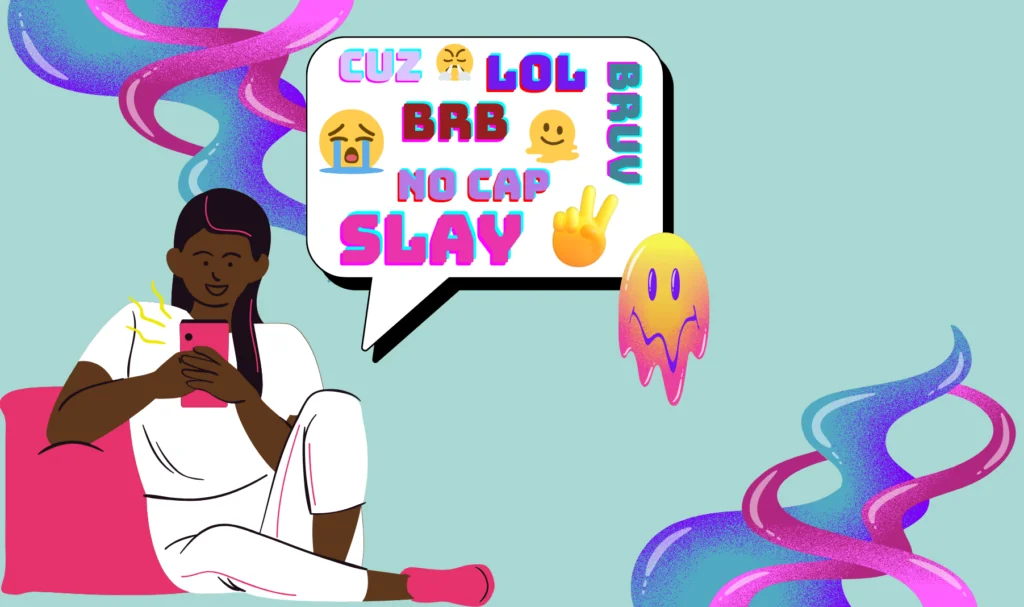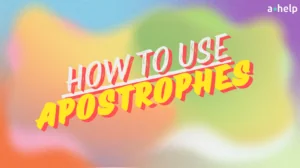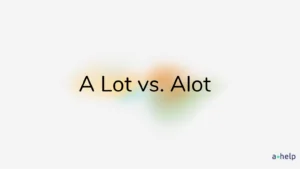If you heard anything about diction, it must have been that it is an attribute of oral speech. Maybe you are thinking that it refers to the way that words and sounds are pronounced. And even though it is partially true, there are nuances. The first one is that diction isn’t only an oral aspect. Writing also has diction. And when we are talking about diction in writing, we mean that a writer or their character has a specific style in word choice, special speech patterns, so to speak. There are different types of such diction, and the number of these types depends on the distribution system but is usually somewhere between 8 and 14. In this article, we will specifically break down the most common types of diction in writing.

✅ AI Essay Writer ✅ AI Detector ✅ Plagchecker ✅ Paraphraser
✅ Summarizer ✅ Citation Generator
9 Most Common Types of Diction You Can See in Writing
Diction is a deliberate and careful choice of words and phrasing that aims to communicate a specific message or establish a certain writing/character style. Thus, diction is mainly used to establish the tone of the narrative and support the overall purpose of the writing. If we take any fiction book, we will see that most characters have their specific tone and style of ‘speaking’ in these books. In the “Harry Potter” series, Hermione and Ron never communicate the same – each of them has a special diction that helps us picture and understand their character more vividly. In the same way, the narrator of any story (the third party telling us what happened) usually has a separate diction that doesn’t interfere with the events happening in the book.
As there are different writing types, various character personas, and a variety of purposes that a writing can serve, there are several (9 to be precise) diction types that can be used to communicate your ideas more effectively in text.

Formal
If you choose formal diction, know that this is a highly structured style of writing that follows all the grammatical rules and uses advanced vocabulary. You will also most probably need to use complex sentence structures and a serious tone that avoids the use of slang, colloquialisms, and contractions. Its main purpose is to display a sense of professionalism and authority as well as show respect for the reading audience. This type of diction is most appropriate in professional or official contexts such as academic papers, business communications, legal documents, and formal speeches.
Example.
“The committee has completed an exhaustive review of the operational procedures and recommends an immediate restructuring of our logistical framework to enhance efficiency. This report delineates several key areas where strategic adjustments are imperative.”
Informal
You probably guessed it, but we still will clarify: informal diction is a relaxed and conversational style of writing that mirrors everyday speech. You are most likely to see it being used in narrative literature like short stories and novels, where authors strive to create authentic and relatable characters through realistic dialogue and narration (like in the “Catcher in the Rye” for example). Using informal diction you can break away from the rigid structures of formal writing and playfully use the language including colloquialisms, contractions, and even slang. Informal diction is the language of personal letters, friendly chats, and casual blogs, where the tone is generally warm and inviting.
Example.
“Hey, I gotta tell you, that movie was just out of this world! Totally blew my mind how they pulled off those crazy stunts. You’ve gotta see it, dude. It’s a blast!”
Pedantic
Pedantic usually means “uptight” or “overscrupulous”. And yeah, this is what this diction type is all about. It is characterized by the use of overly academic or “big” words that aim to impress rather than communicate effectively. This type of diction often gives off an air of arrogance and can make the speaker seem pretentious. In writing though, this type of diction is usually rightfully used to flesh out characters who are intent on appearing intellectual or sophisticated. Any text written using pedantic diction is precise, has a huge amount of detalization, and focuses on the exactness of words. Aside from creative literature, it is also widely applied in academic writing, legal documents, and technical descriptions where detail and specificity are necessary.
Example.
“The individual exhibited a propensity for grandiloquence, consistently utilizing lexicon of considerable complexity. Such verbiage, though arguably superfluous, serves to augment the perception of erudition amongst his interlocutors.”
Pedestrian
Those writers who use pedestrian diction, usually try to be accessible and understandable to a broad audience. Unlike pedantic diction, which often includes complex vocabulary and academic language, pedestrian diction avoids both sophisticated terminology and casual slang. It is the language of everyday conversation, used to communicate the message clearly and without pretension. You may see this type of diction being used by politicians, both in their speeches and written addresses. Your professors at university, actually, can also use this type of diction in their lectures or when compiling study materials for you. After all, they are trying to explain something complicated in much more simple terms The challenge with pedestrian diction is maintaining interest and engagement without sounding condescending, as overly simplistic language can sometimes be perceived as patronizing.
Example.
“We need to fix our roads. They’re in bad shape, and that’s not good for anyone. It’s not just about making them look better. Bad roads are unsafe and can be damaging to cars and pose a threat to pedestrians. So fixing them is good for everyone’s safety and wallets.”
Slang
Slang is an informal language that most of us now use both online and when we speak face-to-face with our friends. These are words like “bruv”, “mad”, “gyal”, “rizz”, “slay”, etc. And yes, slang can also be a form of diction in writing. This one allows speakers to convey identity, solidarity, and cultural relevance, often capturing ideas or emotions in a single, brief expression. It can be used in literature to more accurately portray modern-day characters (especially if they are Gen Zs). It is also a great tool to add authenticity to characters, settings, and dialogue, particularly in works created for specific audiences or that explore special subcultures. However, if you decide to use this diction type, do it sensibly, as it can quickly become annoying, dated, or exclude readers who are not privy to its specific meanings.
Example.
“Are you mad, bruv? Why would you make me leave the party? It was getting so lit, I was in my element bro. I fumbled such a baddie cuz of you. Absolutely savage. I can’t believe you’ve done this.”
Colloquial
Colloquialisms are words that are specific to a certain region and language. It is somewhat similar to slang, and even within this type of speech, you can easily find some more local expressions (like “innit” and “bruv” are widely used in the UK but aren’t so common in the US). Colloquial diction is characterized by the use of language that reflects the everyday speech of particular geographic areas or communities. It includes words, phrases, and expressions that are commonly understood and used within a local context but may be unfamiliar or carry different connotations outside of that locale. This type of diction adds authenticity and depth to characters and settings, especially in literary works. As well as the slang diction, colloquial type is used to make conversations seem more realistic and relatable.
Example (A character from Texas).
“I tell you what, it’s hotter than a billy goat in a pepper patch today. Y’all better stay inside unless you want to end up fried like a catfish at a fish fry.”
Abstract
Abstract diction is the linguistic technique of expressing concepts that are not directly observable or tangible. Like emotions, feelings, fears, beliefs, or anything of that type. Abstract diction requires the reader to interpret and connect with the text on a deeper, often more subjective level, as the language tends to be less concrete and more open to interpretation. It is commonly used in poetry, philosophical discourse, and reflective essays where you basically have to explore complex and often vague themes.
Example.
“Freedom is the essence of our existence, the invisible thread that weaves through every aspect of our lives, binding us in solidarity yet setting us apart as individuals. It is the silent promise of possibility, an endless horizon that stretches beyond the confines of our immediate perceptions.”
Concrete
Concrete diction is characterized by its clarity and specificity, and, contrary to the abstract type, it leaves little room for ambiguity or interpretation. This type of diction focuses on tangible and observable details that can be perceived through the senses, which makes it especially useful for descriptive writing. With the help of concrete diction, you can paint vivid pictures of scenes, objects, and actions, almost bringing them to life. This style is particularly useful in narrative prose, journalism, and any form of writing where precision and factual accuracy are important.
Example.
“The morning sun cast a golden hue over the city, glinting off the windows of the tall, glass skyscrapers. The air was crisp and cool, carrying the faint scent of jasmine from the nearby park. On the street, a vendor sold hot coffee and buttery pastries to the hurried passersby, their faces illuminated by the warm, soft light of dawn.”
Poetic
Poetic diction is a refined and elevated style of writing that emphasizes the aesthetic qualities of language, such as rhyme, rhythm, and phonetics. If you intend to evoke emotions and create vivid imagery for your readers, then this diction type is the way for you to go. Of course, it is most commonly used in poetry, where the sound and meaning of words are often intertwined to elevate the overall sensory experience of the reader. Thus, you will see an extended use of metaphor, simile, symbolism, and other figurative language in poetic diction. Yet, it isn’t only limited to poetry. Other creative forms, such as songwriting, rap, and dramatic monologues, will most probably use poetic diction as well.
Example.
“Under the silvery stare of the moon,
The ocean danced with waves of tune.
Each crest a whisper of the deep’s secret keep,
Lulling the shore to a peaceful sleep.”
Extra Diction Types That Can Also Be Used
Listed above are the most common types of diction that you may have noticed in writing (or even used yourself). However, as we did some digging around the topic, we learned that there are a few less popular types of writing diction. Despite their lesser recognition, they can still become a valuable (and certainly unique) addition to your writing. So, here are the 3 extra dictions we found:
- Dialects
Sometimes this type of diction is considered as a part of colloquial diction. However, as dialects are more distinguished and localized than colloquialisms, we may also separate them into a different diction group. If you decide to use this one in your writing, be sure to pay attention to the vocabulary, syntax, and pronunciation of the dialect you are trying to mimic. - Jargon
Jargon refers to words and phrases that are used in specific contexts or by people with a certain trade/profession. Therefore, if a writer, for example, creates a character who went to prison, they can use prison jargon (words like bagman, chief, or iced) when creating dialogues or monologues with this persona. - Neutral
This is probably the least interesting, but still important type of diction. It is designed to write texts for a wide audience so that everyone (and we mean EVERYONE) can understand the key idea or problem of the text. Here you can’t use any slang, jargon, colloquialisms, or dialect speech as these are the lexical aspects that can confuse some people.
Impact of Technology on Diction
Who doesn’t use social media now? Even your grandma probably has a Facebook page of her own (or maybe a TikTok, who knows). And since technologies and mass communication have become such a huge part of our lives, it is clear that they have some kind of impact on our communication and writing. Hence, it is only logical that social media usage and constant exposure to technologies have greatly influenced our diction as well (both oral and written).

For example, we all use emojis, right? They help us express our emotions through text more clearly. And we also have abbreviations like “LOL”, “ASAP”, and “BRB” to make our communication more efficient and quick. Once we started using them online, in messages, they also found their way into our day-to-day speech. Their use becomes more natural and inseparable from our professional and even academic conversations, despite challenging the norms of professionalism. As such, they make their way into our modern writing and literature, therefore expanding the popularity and use of slang and informal diction types.
It’s clear that this platform-induced linguistic evolution has arguably made digital-reliant diction types (these can be slang, jargon, informal, and abstract types)more widespread in written communication than traditional types, as they adapt quickly to the dynamic needs of global, real-time interaction. This influence is so widespread that it has even blurred the lines between formal and informal writing and punched the boundaries of the already established diction categories.
Wrapping Up
Diction is inseparable from our day-to-day oral speech and writing. It is what helps us be more clear, expressive, and straightforward when communicating our ideas. For this very reason, it should be considered by anyone who decides to start writing down their thoughts. It is important that you, as a writer, deliberately choose specific types of diction to convey your views to the audience. This is the only way that you will make your texts lively, relatable, and easy to understand. Of course, if you are writing just for the sake of putting words onto paper or, as would be more realistic, on the laptop screen, diction isn’t your primary concern. However, if you try to apply it to whatever you are creating, maybe you will see that what once was blabber comes together as a decent piece of work with a unique purpose.
FAQ
Follow us on Reddit for more insights and updates.





Comments (0)
Welcome to A*Help comments!
We’re all about debate and discussion at A*Help.
We value the diverse opinions of users, so you may find points of view that you don’t agree with. And that’s cool. However, there are certain things we’re not OK with: attempts to manipulate our data in any way, for example, or the posting of discriminative, offensive, hateful, or disparaging material.